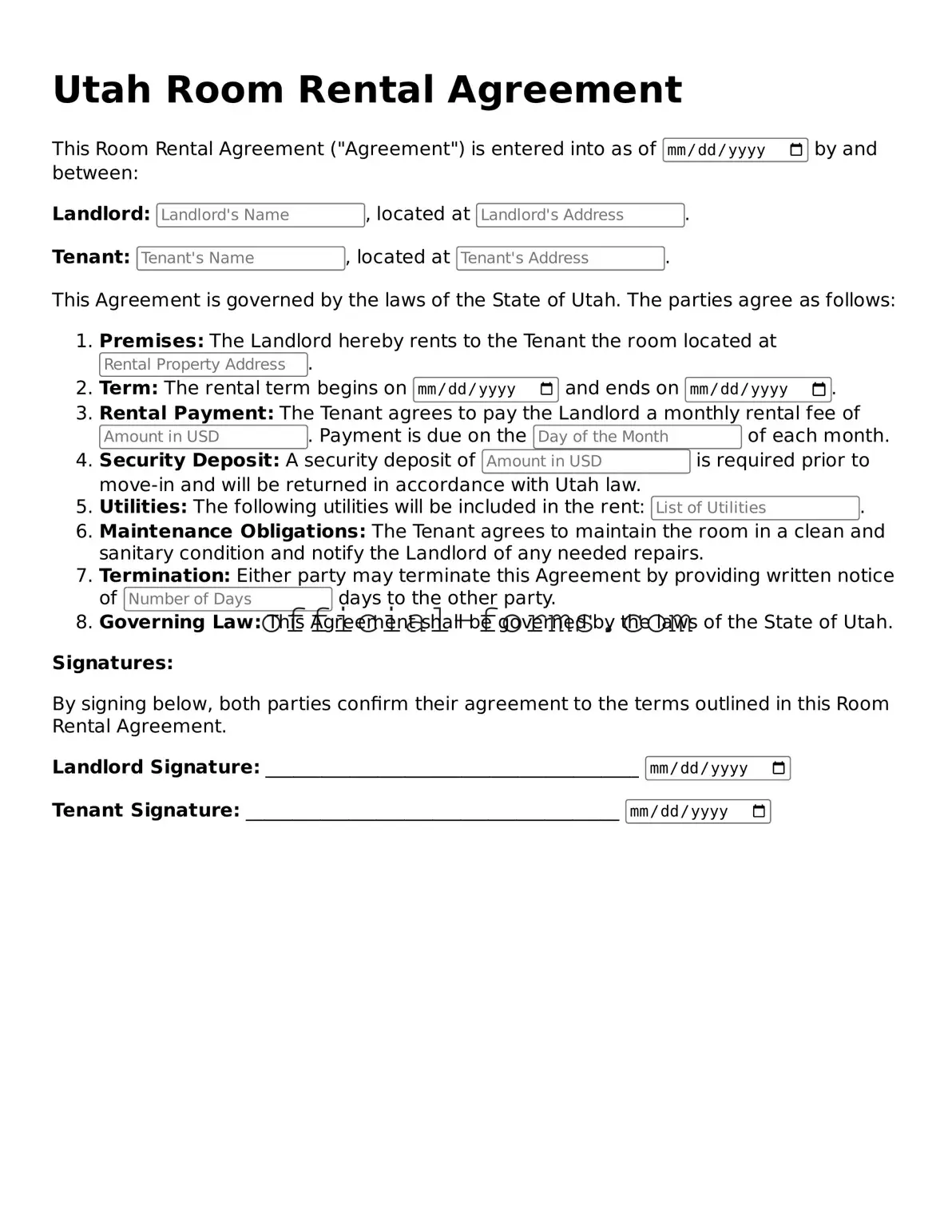Official Utah Room Rental Agreement Document
The Utah Room Rental Agreement is a legal document that outlines the terms and conditions between a landlord and a tenant for renting a room in a residential property. This agreement helps protect the rights of both parties by clearly stating their responsibilities and expectations. Understanding this form is essential for anyone involved in a room rental situation in Utah.
Open My Room Rental Agreement Now
